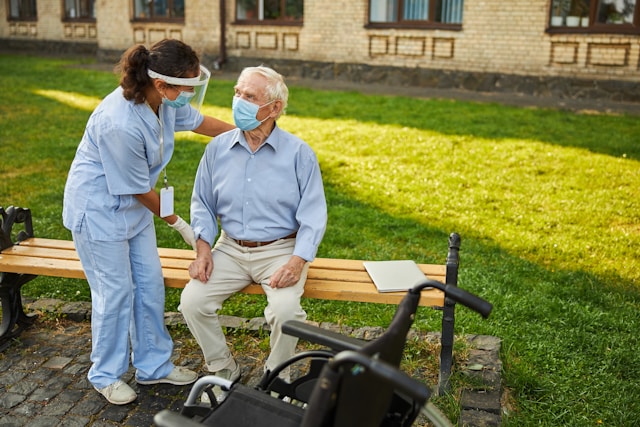
Access to quality healthcare remains a persistent challenge in rural areas across the globe. From the remote hills of Appalachia in the United States to sparsely populated outback communities in Australia, rural residents frequently encounter barriers that urban populations seldom face. These include a shortage of healthcare professionals, long travel distances to medical facilities, fewer hospitals and clinics, and increased prevalence of chronic conditions.
The disparity isn’t just inconvenient—it can be deadly. According to the Centers for Disease Control and Prevention (CDC), rural Americans are more likely to die from heart disease, cancer, unintentional injury, chronic lower respiratory disease, and stroke than their urban counterparts. Limited healthcare access contributes significantly to these outcomes. Additionally, socioeconomic factors, such as lower average incomes and reduced health insurance coverage, further complicate matters.
In this context, telehealth has emerged as a powerful, innovative solution to help close the rural health divide. By enabling remote diagnosis, monitoring, and consultation, telehealth breaks down geographic and economic barriers, bringing essential healthcare services directly into patients’ homes or local clinics.
What Is Telehealth and How Does It Work?
Telehealth, often used interchangeably with telemedicine, refers to the use of digital technologies—such as video conferencing, mobile apps, wearable devices, and online patient portals—to deliver healthcare services remotely. While telemedicine focuses more specifically on clinical services, telehealth encompasses a broader range of activities including provider training, administrative meetings, and continuing medical education.
For rural areas, telehealth can take many forms:
Virtual Consultations: Patients can speak with doctors or specialists via video call, eliminating the need for travel.
Remote Monitoring: Devices track vital signs like blood pressure or blood glucose levels and send data directly to healthcare providers.
Mobile Health (mHealth): Apps allow for medication reminders, appointment scheduling, and access to health records.
Store-and-Forward Technologies: Health information such as X-rays or test results can be transmitted electronically to specialists for review.
These services are particularly valuable in places where there is limited access to specialists. For instance, a rural clinic can connect a patient with a cardiologist based in a city hundreds of miles away, significantly reducing the wait time and improving patient outcomes.
Moreover, telehealth is not just for acute care—it plays a growing role in chronic disease management, mental health counseling, post-operative follow-ups, and preventative care.
Telehealth’s Impact on Rural Communities
The expansion of telehealth has already begun to transform healthcare delivery in rural settings. A growing body of research points to its effectiveness in improving both access and outcomes:
Improved Access to Specialists
Rural areas often lack specialists, which can delay diagnosis and treatment. Telehealth allows primary care providers to consult with specialists in real-time, providing immediate insight and potentially lifesaving interventions.
Reduction in Travel and Associated Costs
For rural patients, reaching the nearest medical facility can mean hours of driving, missed workdays, or arranging costly transportation. Telehealth eliminates or reduces this burden, especially for routine check-ups or follow-up appointments.
Continuity of Care
Patients with chronic illnesses benefit from regular monitoring and communication with providers. Telehealth supports continuous care, reducing the likelihood of complications or hospital readmissions.
Mental Health Services
Mental health providers are especially scarce in rural areas. Teletherapy and remote psychiatric services allow patients to receive consistent and private care without the stigma or logistical hurdles associated with in-person visits.
Response During Emergencies
During the COVID-19 pandemic, telehealth became a critical lifeline for rural communities, allowing them to maintain medical consultations while minimizing exposure risks. This shift has helped both patients and providers become more comfortable with the technology, laying the groundwork for sustained use.
According to a 2022 report from the American Telemedicine Association, rural health systems that integrated telehealth saw a 25% reduction in hospital readmissions and a 35% increase in patient adherence to treatment plans. These statistics underscore telehealth’s potential not only to expand access but to elevate the quality of care delivered.
Challenges and the Road Ahead
Despite its promise, telehealth faces several hurdles before it can fully revolutionize rural healthcare:
Broadband Connectivity
One of the biggest limitations is lack of high-speed internet in many rural areas. Without reliable connectivity, telehealth services are inaccessible or unreliable. Expanding broadband infrastructure is essential.
Digital Literacy
Some patients, particularly older adults, may struggle with using digital platforms. Efforts must be made to provide user-friendly tools and education to help bridge the digital divide.
Regulatory and Reimbursement Issues
Policies around telehealth reimbursement vary by state and insurer. Some services may not be covered, and cross-state licensing laws can complicate provider availability. Ongoing policy reforms are required to standardize and support telehealth expansion.
Security and Privacy Concerns
Handling sensitive patient data electronically introduces cybersecurity risks. Health providers must ensure they comply with HIPAA and other privacy laws, while investing in secure platforms.
Despite these obstacles, momentum is clearly on telehealth’s side. Federal and state governments, alongside private sector partners, are investing heavily in infrastructure, grants, and pilot programs aimed at expanding telehealth capabilities.
The Rural Healthcare Challenge
The future of rural healthcare will likely be a hybrid model—combining traditional in-person care with robust telehealth services. This blend offers flexibility, scalability, and a patient-centered approach that can adapt to a range of medical needs and geographic challenges.
The role of telehealth in rural healthcare is no longer theoretical—it’s a proven tool that has already begun to transform how medical services are delivered in underserved areas. By leveraging technology to overcome geographical, financial, and logistical barriers, telehealth holds the key to a more equitable healthcare system.
For rural communities that have long struggled with healthcare access, telehealth is not just a convenience—it’s a revolution. With continued investment, policy support, and community engagement, telehealth can become a permanent fixture in the rural healthcare landscape, offering hope, healing, and high-quality care to those who need it most.